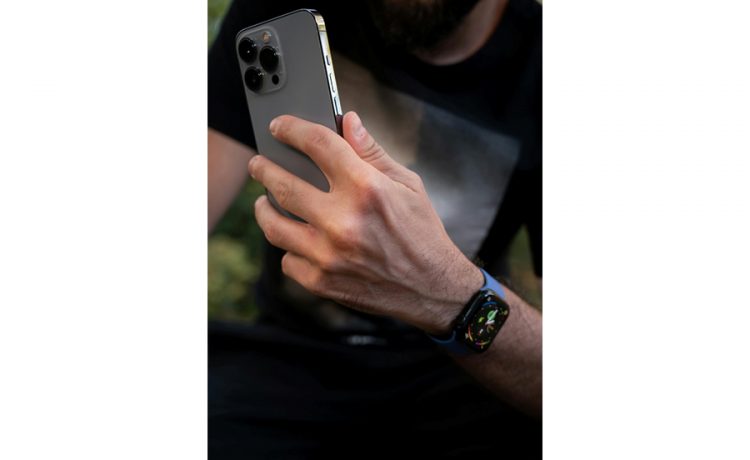In the age of digital transformation, mobile devices have become an indispensable part of our daily lives. From smartphones to tablets, these portable gadgets hold a treasure trove of information, ranging from personal conversations to sensitive business data.
However, what happens when these devices become involved in legal disputes or criminal investigations? How do experts uncover the truth hidden within them? Let’s delve into the fascinating world of mobile device forensics, where data becomes evidence and secrets are revealed.
Did you know that approximately 6.94 billion people worldwide own smartphones? These devices store a vast amount of personal and professional data, making them crucial sources of evidence in legal cases and investigations.
However, extracting, analyzing, and interpreting data from mobile devices is a complex and specialized process that requires the expertise of data forensic expert. This is where Eclipse Forensics comes into play.
Eclipse Forensics is a leading provider of forensic audio, forensic video, digital forensics, mobile devices, redaction, and file extraction and conversion services. With a team of highly skilled professionals, Eclipse Forensics specializes in unlocking the hidden secrets of mobile devices, offering forensic cell phone data recovery and cell phone forensic services.
In this comprehensive guide to mobile device forensics, we will explore the intricate process of extracting, analyzing, and interpreting data from smartphones, tablets, and other portable devices. From recovering deleted messages to tracing online activities, we will uncover the comprehensive capabilities of mobile device forensics in uncovering crucial evidence.
Now, let’s embark on a journey through the intricacies of mobile device forensics.
Understanding Mobile Device Forensics
Mobile device forensics stands at the forefront of digital investigation, offering a specialized approach to extracting, analyzing, and interpreting data from a myriad of portable devices.
Let’s delve deeper into the key steps involved in mobile device forensics and the challenges that forensic experts encounter in this dynamic field.
1. Device Acquisition:
The journey of mobile device forensics begins with the acquisition of the device under scrutiny. This crucial step involves the careful handling and preservation of the device’s digital footprint to ensure that no data is tampered with or lost during the investigative process.
Here’s how forensic experts approach device acquisition:
Specialized Tools and Techniques:
Forensic experts utilize a variety of specialized tools and techniques to acquire a forensic image of the device’s storage. This process involves creating an exact replica of the device’s data, including both active and deleted files, while preserving the integrity of the original evidence.
Chain of Custody:
Maintaining a meticulous chain of custody is essential to ensure the admissibility of evidence in legal proceedings. Forensic experts document every step of the acquisition process, from the initial seizure of the device to the creation of forensic images, to establish a clear trail of custody and accountability.
2. Data Extraction: Unlocking the Secrets Within

Once the device has been acquired, forensic experts proceed with the extraction of data stored on the device. This phase involves retrieving a wide range of digital artifacts, including text messages, call logs, emails, photos, videos, and application data.
Here’s how data extraction unfolds:
Comprehensive Data Recovery:
Forensic tools and techniques are employed to recover both active and deleted data from the device’s storage. Deleted data, which may still reside in the device’s memory, is meticulously reconstructed to uncover potentially valuable evidence that could be crucial to the investigation.
Forensic Analysis:
Data extraction is not limited to user-generated content; it also encompasses metadata, system logs, and other digital breadcrumbs that provide insights into the device’s usage history. Forensic experts meticulously analyze this data to uncover patterns, connections, and anomalies that may hold significance in the investigation.
3. Data Analysis: Deciphering the Digital Puzzle
With a wealth of data at their disposal, forensic experts embark on the critical task of data analysis. This phase involves scrutinizing extracted data to identify relevant information, establish timelines, and reconstruct events.
Here’s how data analysis unfolds:
Timestamp Analysis:
Timestamps embedded within digital artifacts provide crucial temporal context, allowing forensic experts to sequence events and establish timelines with precision. By correlating timestamps across multiple sources of data, forensic experts can reconstruct the sequence of actions and interactions on the device.
Geolocation Data:
Location-based information, such as GPS coordinates and Wi-Fi access points, offers valuable insights into the movements and activities of the device’s user. Forensic experts leverage geolocation data to map out the spatial context of events and corroborate or refute witness testimony.
4. Data Interpretation: Transforming Data into Actionable Intelligence

The culmination of the forensic process lies in data interpretation, where forensic experts distill complex data sets into actionable intelligence. This phase involves synthesizing findings, drawing conclusions, and generating reports that can inform legal proceedings or investigations.
Here’s how data interpretation unfolds:
Correlation and Link Analysis:
Forensic experts correlate multiple sources of data to uncover connections and relationships between individuals, events, and digital artifacts. By piecing together disparate pieces of evidence, forensic experts can construct a cohesive narrative that sheds light on the circumstances surrounding the case.
Expert Testimony:
In legal proceedings, forensic experts may be called upon to provide expert testimony based on their findings. Through clear and concise presentation of their analysis, forensic experts help jurors and judges understand the significance of digital evidence and its implications for the case at hand.
Challenges and Considerations in Mobile Device Forensics
While mobile device forensics offers unparalleled capabilities for uncovering evidence, it also presents several challenges and considerations that forensic experts must navigate:
1. Encryption and Security Measures:
The widespread adoption of encryption and other security measures poses a formidable barrier to accessing and extracting data from mobile devices. Forensic experts must employ advanced decryption techniques and tools to overcome these obstacles and access encrypted data.
2. Deleted Data Recovery:
Deleted data, though seemingly erased from the device, may still linger in its storage, waiting to be unearthed through forensic analysis. Forensic experts must deploy specialized techniques and tools to recover and reconstruct deleted data, which may contain critical evidence relevant to the investigation.
3. Cloud Storage and Synchronization:
With the proliferation of cloud storage and synchronization services, relevant data may not be confined to the device itself but may also reside on remote servers. Forensic experts must navigate the complexities of cloud forensics to access and analyze data stored in the cloud, ensuring a comprehensive investigation.
4. Device Diversity:
The vast array of mobile devices available on the market, each with its unique hardware, software, and security features, presents a significant challenge in mobile device forensics. Forensic experts must possess a deep understanding of various device models and operating systems to effectively conduct forensic analysis across diverse platforms.
The Importance of Mobile Device Forensics in Legal Proceedings

Mobile device forensics has become an indispensable tool in the realm of legal proceedings and investigations, offering invaluable insights and evidence that can sway the course of justice.
Let’s delve deeper into the various applications of mobile device forensics across different types of legal cases:
1. Criminal Investigations: Unraveling the Web of Criminal Activities
In the realm of criminal investigations, mobile devices often serve as crucial pieces of evidence in cases ranging from drug trafficking to cybercrime. Mobile device forensics empowers law enforcement agencies to delve into the digital footprints left behind by suspects, uncovering vital clues and connections that can lead to breakthroughs in investigations.
Here’s how mobile device forensics aids in criminal investigations:
Evidence Gathering:
Mobile devices contain a wealth of information, including call logs, text messages, GPS data, and internet browsing history. Forensic analysis of these devices can uncover key evidence linking suspects to criminal activities, such as communications with co-conspirators, location data at the time of a crime, and incriminating digital evidence.
Suspect Identification:
Mobile device forensics plays a pivotal role in identifying suspects and establishing their involvement in criminal activities. By examining data stored on smartphones, law enforcement can pinpoint individuals associated with illicit actions, track their movements, and gather evidence to build a compelling case against them.
Case Building:
Forensic analysis of mobile devices enables law enforcement agencies to construct a comprehensive narrative of events, corroborating witness testimony and strengthening the prosecution’s case. From identifying motives to establishing timelines of criminal activity, mobile device forensics provides crucial insights that can be pivotal in securing convictions.
2. Civil Litigation: Uncovering Truths in Legal Disputes
In civil litigation cases, such as divorce proceedings or employment disputes, mobile device forensics plays a vital role in uncovering evidence and unraveling complex narratives.
Here’s how mobile device forensics contributes to civil litigation:
Evidence Discovery:
Mobile devices often harbor a wealth of evidence relevant to civil disputes, including text messages, emails, social media interactions, and multimedia files. Forensic analysis of these devices can unearth critical evidence pertaining to allegations of infidelity, harassment, discrimination, or wrongful termination, providing valuable ammunition for litigators.
Supporting Claims:
Whether it’s corroborating allegations of misconduct or disproving false accusations, mobile device forensics can provide concrete evidence to support or refute claims made by parties involved in civil litigation. By analyzing digital communications, location data, and other relevant information, forensic experts can help substantiate the claims of their clients and strengthen their legal position.
Settlement Negotiations:
In many civil litigation cases, the evidence uncovered through mobile device forensics can influence settlement negotiations and out-of-court resolutions. Armed with irrefutable evidence obtained from forensic analysis, parties may be more inclined to negotiate favorable terms or reach agreements that reflect the realities uncovered through digital evidence.
3. Corporate Investigations: Safeguarding Businesses from Misconduct
In the corporate world, allegations of intellectual property theft, data breaches, and employee misconduct can have far-reaching consequences. Mobile device forensics serves as a vital tool for organizations seeking to safeguard their interests and maintain compliance with regulatory requirements.
Here’s how mobile device forensics aids in corporate investigations:
Detecting Insider Threats:
Mobile devices used by employees often contain sensitive company information, making them potential vectors for insider threats and data breaches. Mobile device forensics enables organizations to proactively identify and mitigate risks posed by employees engaging in unauthorized activities, such as data exfiltration or intellectual property theft.
Investigating Compliance Violations:
Regulatory compliance is a paramount concern for businesses operating in highly regulated industries. Mobile device forensics allows organizations to investigate allegations of compliance violations, such as insider trading, bribery, or violations of data protection regulations. By analyzing data from company-owned devices, organizations can demonstrate due diligence and adherence to regulatory standards.
Resolving Disputes:
In cases of internal disputes or legal actions involving the company, mobile device forensics can provide crucial evidence to support the organization’s position. Whether it’s investigating allegations of employee misconduct or uncovering evidence of wrongdoing by business partners, forensic analysis of mobile devices can help organizations protect their interests and reputations.

Harnessing the Power of Mobile Device Forensics with Eclipse Forensics
Mobile device forensics is a powerful tool for uncovering crucial evidence in legal proceedings and investigations. From recovering deleted messages to tracing online activities, the comprehensive capabilities of mobile device forensics are essential for revealing the truth hidden within smartphones, tablets, and other portable devices.
As a leading provider of forensic audio, video forensics, digital forensics, and mobile device forensics services, Eclipse Forensics is committed to unlocking the power of mobile device forensics for our clients. With our team of experienced data forensic expert and state-of-the-art technology, we specialize in forensic cell phone data recovery, cell phone forensic services, and more.
If you require assistance with mobile device forensics or any other forensic services, don’t hesitate to contact Eclipse Forensics at (904) 797-1866. Our team is here to help you uncover the truth and achieve justice.









